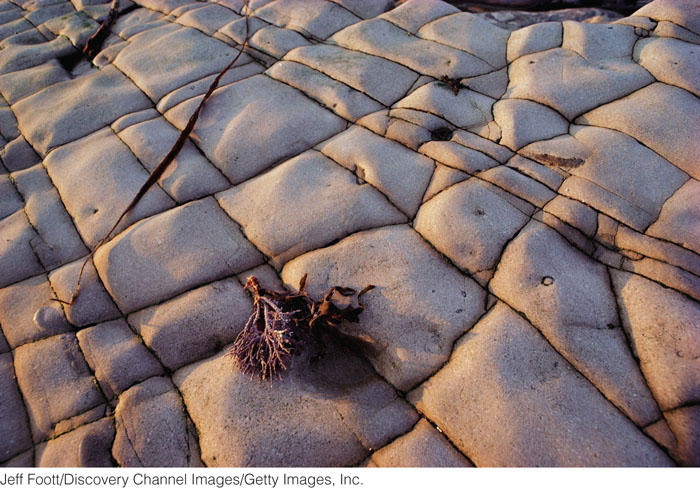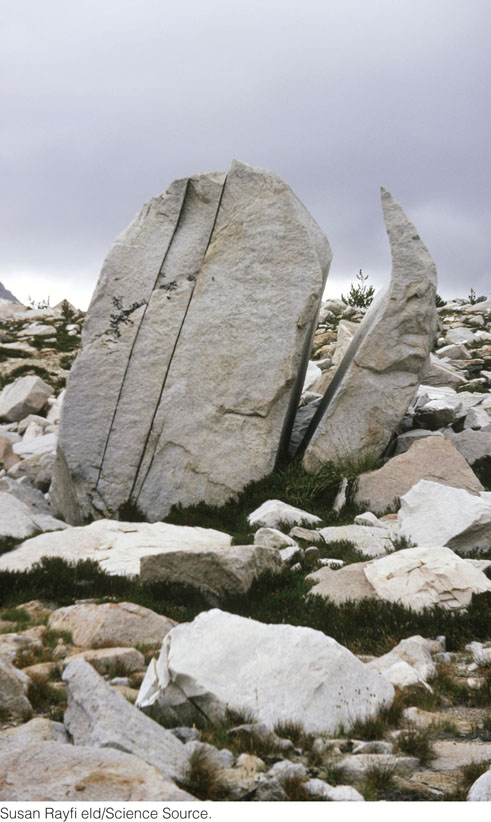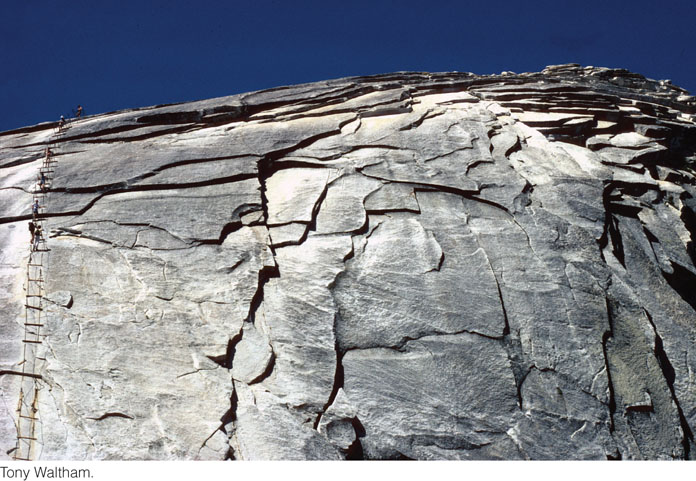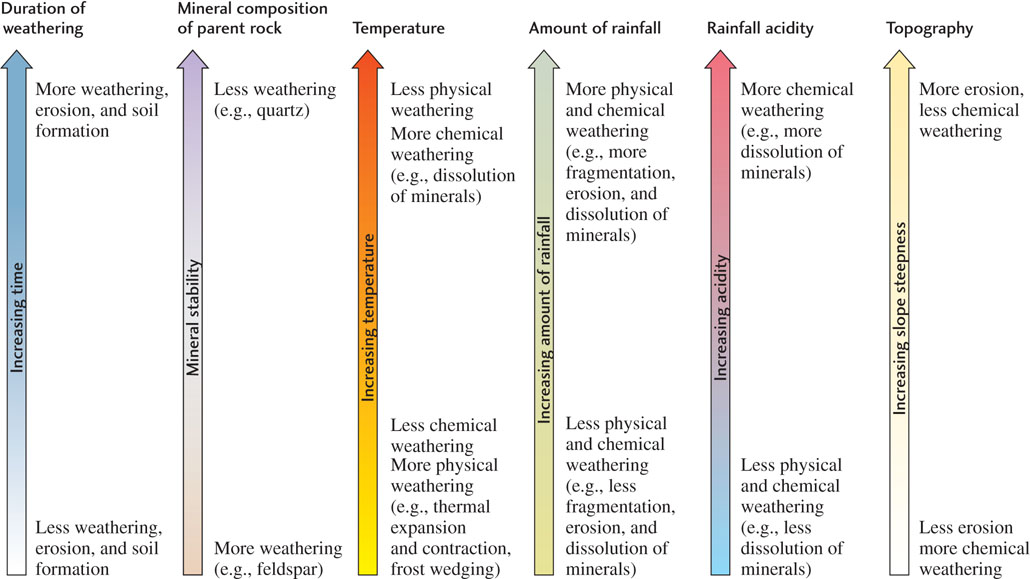Physical Weathering
Now that we have surveyed chemical weathering, we can turn to its partner process, physical weathering. We can see the workings of physical weathering most clearly by examining its role in arid regions, where chemical weathering is minimal.
How Do Rocks Break?
Rocks can break for a variety of reasons, including stress along natural zones of weakness and biological and chemical activity.
Natural Zones of Weakness
Rocks have natural zones of weakness along which they tend to crack. In sedimentary rocks such as sandstone and shale, these zones are the bedding planes formed by successive layers of solidified sediment. Foliated metamorphic rocks such as slate form parallel cleavage planes, which enable them to be split easily. Granites and other nonfoliated rocks are often referred to as massive, which in this case means that they contain no preexisting planes of weakness. Massive rocks tend to crack along regular fractures spaced one to several meters apart, called joints (Figure 16.7). As we saw in Chapter 7, joints and less regular fractures result from deformation and from cooling and contraction while rocks are still deeply buried in Earth’s crust. Through uplift and erosion, the rocks eventually rise to Earth’s surface. There, freed from the weight of overlying rock, the fractures open slightly. Once the fractures open a little, both chemical and physical weathering work to widen them.

Activities of Organisms
The activities of organisms contribute to physical as well as chemical weathering. Bacteria and algae may invade cracks in rock, producing microfractures. These organisms, both those in cracks and those that may encrust the rock, produce acids, which then promote chemical weathering. In some regions, acid-producing fungi are active in soils, contributing to chemical weathering. Many of us have seen a crack in a rock that has been widened by a tree root (see Figure 5.2). Animals burrowing or moving through cracks can also break rock.
Frost Wedging
One of the most efficient mechanisms for widening cracks in rock is frost wedging: breakage resulting from the expansion of freezing water. As water freezes, it expands, exerting an outward force strong enough to wedge open a crack and split a rock (Figure 16.8). This same process can crack the engine block of a car that is not protected by antifreeze. Frost wedging is most important where water episodically freezes and thaws, as in temperate climates and in mountainous regions.

444
Exfoliation
One form of rock breakage is not directly related to preexisting zones of weakness. Exfoliation is a physical weathering process in which large flat or curved sheets of rock are detached from an outcrop. These sheets may look like the layers peeled from a large onion (Figure 16.9). Even though exfoliation is common, no generally accepted explanation for it has yet emerged. Some geologists have suggested that exfoliation results from an uneven distribution of expansion and contraction caused by chemical weathering and temperature changes.

Interactions Between Weathering and Erosion
Weathering and erosion are closely related, interacting processes, as we saw in Chapter 5. Physical weathering and erosion are tied by the processes by which wind, water, and ice work to dislodge particles of rock and move them away from their source. Physical weathering breaks a large mass of rock into smaller pieces, which are more easily eroded and transported.
The steepness of slopes affects both physical and chemical weathering, which in turn affect erosion. Weathering and erosion are more intense on steep slopes, and their action makes slopes gentler. Flows of rainwater are the primary agent of erosion, but wind may blow away the finest particles, and glacial ice can carry away large blocks torn from bedrock.
Chemical weathering rates are low at high elevations, where temperatures are generally low, soil is thin or absent, and vegetation is sparse. Physical weathering is greater at high elevations and in glacial terrains, where ice tears apart rock. We can see that erosional processes are closely related to the sizes of the fragments formed by physical weathering. As weathered material is eroded and transported, its size and shape may change further, and its composition may change as a result of chemical weathering. When transportation stops, deposition of the sediment formed by weathering begins.
445
Figure 16.10 is a chart summarizing the factors that influence weathering and erosion.
